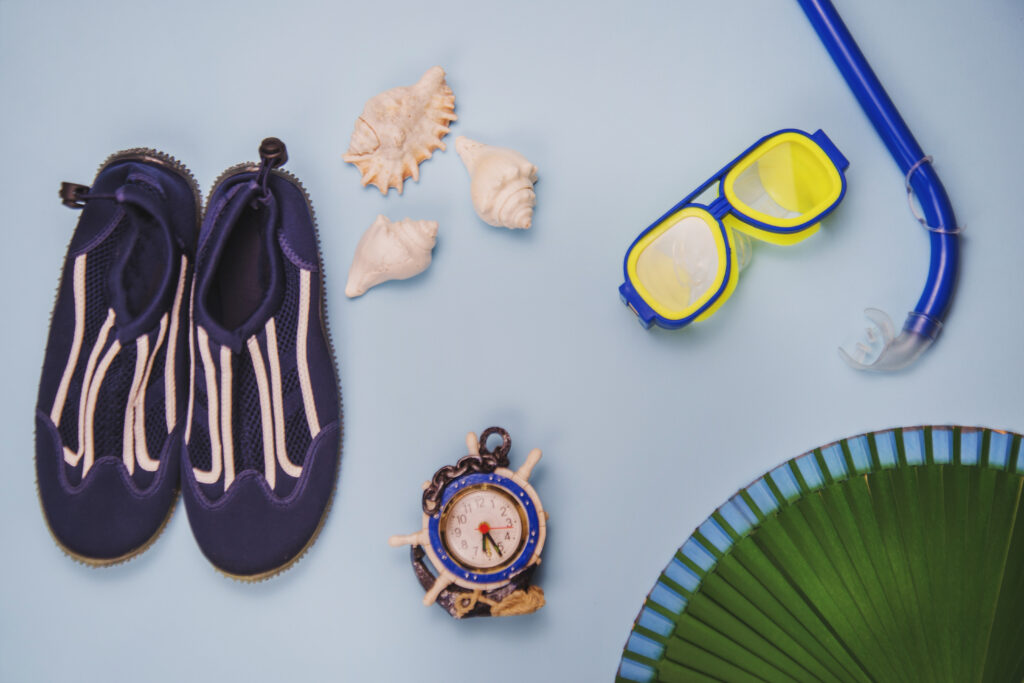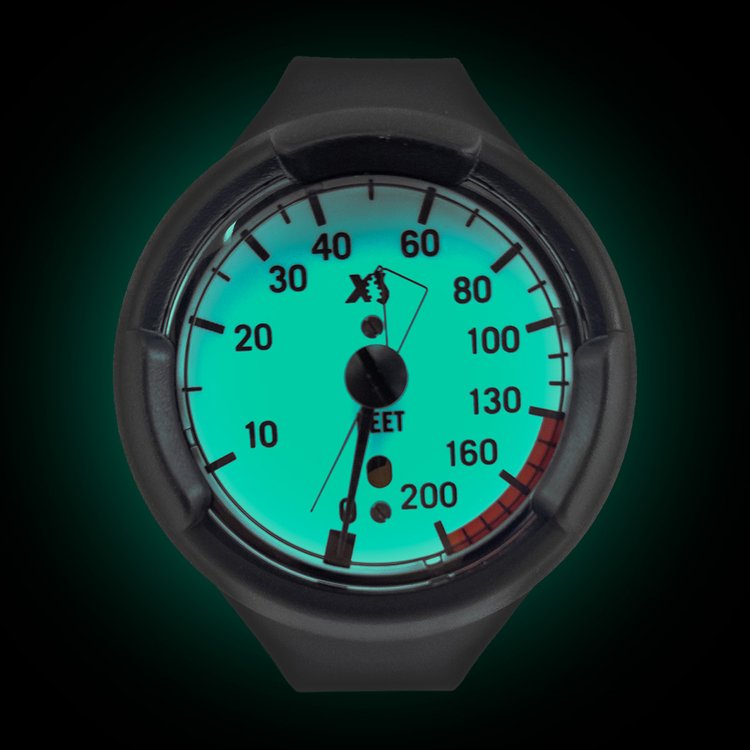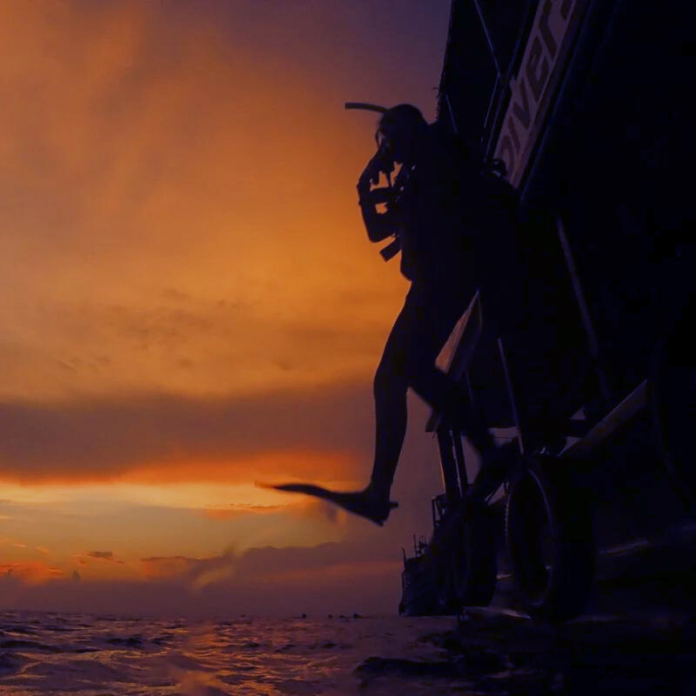Essential Diving Equipment: Swim Masks, Snorkels, and More.
A comprehensive overview of the fundamental gear required for diving. It highlights the importance of swim masks and snorkels, which fit snugly over the eyes and allows divers to explore underwater environments comfortably. The article also touches upon additional equipment such as divers’ distress strobes, cyalume sticks for visibility in low light conditions, and hand lamps for close-up task.
The significance of underwater lighting, wrist depth gauges for measuring depth, and compasses for navigation are also discussed. This overview serves as a guide for divers, emphasizing the essentiality of these equipment pieces for a safe and enjoyable diving experience.

Swim Mask.
A swim mask is provided that fits snugly round the upper part of the face over the eyes, under the nose, but above the mouth. Swim masks are designed to include the nose so that pressure inside the mask can be equalized to prevent squeeze damage to the eyes.
This mask worn with a snorkel tube allows a diver on the surface to search immediately below the surface.
Snorkel Tube.
A snorkel tube is provided for use in conjunction with a swim mask.
- It enables a diver to conserve their air on the surface or breathe freely with their face in the water when they are without breathing apparatus.
- The tube can be supported by means of a rubber grommet, which fits round the facemask strap and the tube, or it can be slid between the facemask strap and the face.
- The tube also enables the diver with an exhausted set to take up the most comfortable position in the water, i.e. with the body upright and the head just below the surface.

Divers Distress Strobe.
The divers distress strobe is contained in a pressure-tight plastic case and is operated by hand. The strobe is issued complete with securing strap. An alkaline battery powers the strobe. When operated the light flashes at regular intervals enabling location of the diver.
The distress strobe is for use in an emergency and is not to be used as a routine means of marking a diver’s position in the water.
Cyalume Stick.
Divers may use a chemical light (cyalume) to indicate their position on the surface when diving at night or conducting free-swimming operations.

Divers Hand Lamp/Personal Diving Light (PDL).
This portable, battery operated lamp is generally used for close work, such as searching ships hulls or carrying out work on underwater fittings.
Underwater Lighting.
- Underwater lighting can be used whenever matter in suspension in the water, or stirred up from the bottom by the diver, does not render it valueless.
- Because harbors are generally muddy and, therefore, unsuitable for lighting, divers should get used to working by touch. They should never allow themselves to become wholly reliant on light. Furthermore, it must not be overlooked that lighting is one more item for both the surface team and the diver to worry about.
- Even in relatively clear conditions a light beam underwater is full of reflections from particles of matter in the water and these reflections prevent the diver from seeing through the beam; the lamps should, therefore, be placed so that the beams obliquely strike the object to be illuminated, with as little beam as possible between the diver and the object.

Emergency Flares.
- The Signal Distress Day and Night (SDDN) is authorized for use by divers and carried during various diving operations as dictated by the diving supervisor/risk assessment. It may be used for a maximum of 5 two hour dives to a maximum of 30 m before it is to be expended or returned for disposal. Immersions in water to depths less than 2 m do NOT affect the life restrictions of the SDDN.
- Prior to use the SDDN is to be visually checked ensuring it is in serviceable condition. The end caps are not to be removed for inspection as they are factory fitted and designed to prevent any water ingress to the pull ring ends. Removal of the cap will degrade the sealing ability of the caps and may render the flare unserviceable.

- If contained in the Dive Canister, the SDDN is cleared to 150 m for an unlimited time.
- The SDDN must be secured to the diver in a manner where it can be easily detached and comes readily to hand in an emergency. It should be secured to the diver and not the breathing set to allow use after the set has been ditched.
- In use the SDDN, is to be held at arm’s length in a position that keeps the burning end clear of the water. The SDDN may be used both at night and during daylight. When functioned there may be small components ejected from the SDDN, therefore when functioned it is to pointed in a safe direction clear of personnel. A forward danger area of 6 m is to be observed.
- When diving in pairs and one diver gets into difficulties, it is the responsibility of the buddy to bring the diver to the surface and function the SDDN of the stricken diver. The second SDDN must be retained in reserve and used after a suitable interval, if it is apparent that no assistance is forthcoming.
- SDDN should be used only if emergency assistance is required. They should not be used for routine indication of the diver’s position. Prior to and following any training being conducted using flares the local MCA/Coastguard is to be informed. Should a flare fail to function it is to be reported in record.
Wrist Depth Gauge.
The gauge is designed to be strapped to the wrist, but can also be strapped to a swim board. Depth gauges can be used solely as a depth indicator provided they have been calibrated. It should be worn when conducting SABA MOD 1 diving operations (Army Only).
Compass.
A hand-held compass can be carried in the palm of the hand or strapped to the swim board. Bearings are taken while on the surface by viewing the object over the top of the compass. The course can then be swum by keeping the bearing in line with the lubber’s line.

Conclusion:
In conclusion, the article highlights the importance of essential diving equipment such as swim masks, snorkels, distress strobes, cyalume sticks, hand lamps, depth gauges, and compasses. These tools are vital for ensuring safety, visibility, and navigation during adventures.
Having the right diving equipment, including swim masks, snorkels, and other essential gear, is crucial for divers to ensure their safety, visibility, and overall enjoyment while exploring underwater environments.

